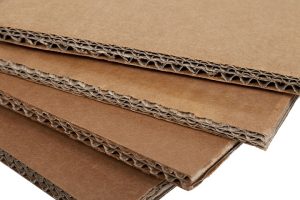
Lead (chemical symbol Pb) is called “plumbum” in Latin. Ancient alchemists believed it was the oldest metal in the world. Some even thought they could turn lead into gold with the right formula.
This heavy, dense, and malleable metal occurs naturally all over world, often found in combination with other ores. Today, manufacturers still use lead to create a variety of products, including lead-acid batteries, cellphone components, ammunition, radiation barriers, and balancing weights used on car and truck wheels.
Despite its usefulness, lead is a cumulative toxicant and pretty much the last thing you want to find inside the walls of your house or workplace.
Lead poisoning – caused by a buildup of lead in the body – negatively impacts human development (both cognitive and physiological) and can cause a host of other health problems, depending on the level of exposure. Lead is especially hazardous for children, who are more susceptible to its negative health impacts.
There are two types of lead poisoning:
- Acute lead poisoning: Ingesting or absorbing a large amount of lead in a very short time period
- Chronic lead poisoning: Ingesting or absorbing small amounts of lead over a long period of time, causing a slow buildup in the system[1]
Lead can remain in the human body for weeks (in the soft tissues) and even years (in bones and teeth).[2] Taking a simple blood test is the best way to determine if you or your child has been exposed. Some states even require young children to be tested for lead.
Got lead?

As you likely know from hearing about the Flint Water Crisis, drinking lead-contaminated water can be very harmful over time, which is why the use of lead water pipes has been discontinued (at least in the U.S.) for decades. Household building materials are no longer manufactured using lead in the United States. However, if you buy a residential home or commercial property that was built prior to the mid-1970s, there could still be leaded materials inside. (You may also find asbestos, but that’s a totally different can of worms).
Aside from drinking lead-contaminated water, lead exposure can also occur when:
- A person ingests flakes of lead paint, or repeatedly handles items that contain lead
- A person inhales or ingests dust from lead-painted surfaces that has developed over time
- Your soil, yard, or playground has been contaminated by dust or flakes from exterior lead-based paints or from industrial sources
Basically, any building constructed prior to 1980 could potentially contain lead, even if it was previously renovated (not every renovator takes the time to test for and remove all lead building materials). Lead testing should only be conducted by a certified lead inspector or trained EHS professional.
Did you know? The U.S. Department of Housing and Urban Development (HUD) does not recognize lead testing by a Certified Renovator using test kits?[3]
Certified lead inspectors test pipes, painted surfaces, and other materials both inside and outside a structure. Be aware: Pipes and paint are not the only building materials that may contain lead. Stains, varnishes, shellac, window glazing putty, mortar, solder, and other substrate materials manufactured prior to the 1980s may also contain lead. These materials may also be covered up by layers of non-lead paint and/or wallpaper, which can then be uncovered and dispersed into the air during renovation.
Testing for lead in residential and commercial structures

There are two different methods used to test for lead. The first involves gathering samples and sending them to an accredited lab for analysis. To ensure accurate test results, an inspector will collect suitably sized samples. Although DIY home lead test kits are available at many home improvement stores, the most accurate results are always obtained from a laboratory and by a certified inspector.
The second testing method uses an X-ray Fluorescence Analyzer (XRF) to test the lead in a substrate.[4] This method is generally the easiest and fastest. An inspector can obtain a result right away, in the field, and almost any surface can be tested. An XRF instrument reads the lead concentrations in milligrams per square centimeter (mg/cm2). These instruments can also read concentrations of lead in soil.
A big part of effective lead testing is knowing where to look for lead and what types of materials to inspect. Simply taking a few paint samples isn’t always effective and may result in lead building materials being overlooked.
Did you know? If a home or child-occupied facility was built before 1978, all surfaces affected by a renovation covered by the EPA’s Renovation, Repair and Painting Rule must either be tested for lead-based paint or presumed to contain lead-based paint prior to any demolition?[3]
If you would like more information about lead testing in a residential home or commercial building, contact Higgins and Associates at 1-877-881-4525 or send an email to info@higgins-and-associates.com.
References:
1. https://www.epa.gov/lead/learn-about-lead
2. https://www.osh.net/articles/archive/osh_basics_2001_may26.htm



